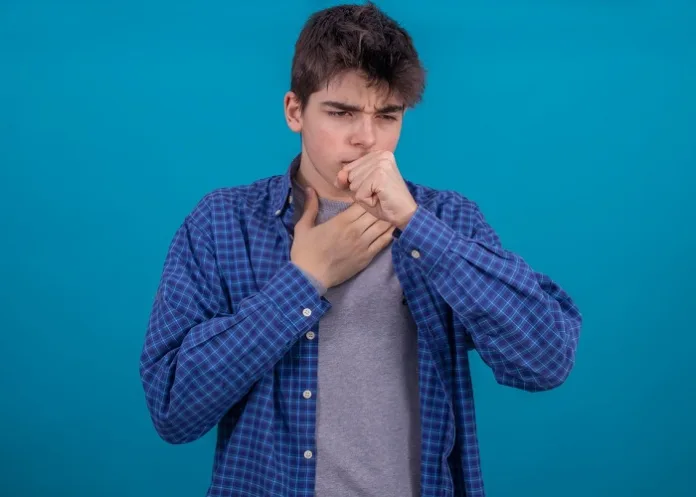TB infection can interfere with normal lung development during an important stage of growth – with researchers finding that two out of three teenagers diagnosed with TB have lung abnormalities even after successfully completing treatment for the disease, and despite being “cured”.
This, said the Stellenbosch University team, meant the teens would be unable to reach their full potential when they reached adulthood.
In a first study to comprehensively assess lung function in adolescents with TB during and after treatment, researchers found that despite being cured, those who had been infected had less lung function than peers who have never been diagnosed with TB, putting them at risk of developing chronic lung disease prematurely.
The study, carried out among 100 youngsters in Cape Town aged 10-19, was recently published in The Lancet’s eClinicalMedicine, reports TimesLIVE.
The team had compared the lung function of 50 adolescents diagnosed with TB with that of 50 healthy children who were exposed to TB but did not develop disease. The cohort diagnosed with TB conducted a battery of lung function tests and six-minute walking tests two months after starting TB treatment, and again at about a year after treatment ended.
Results from the first assessment conducted two months into treatment found abnormal lung function among 76% of them.
About 65% were still showing abnormal lung function at the second assessment.
Lead researcher Dr Marieke van der Zalm of Stellenbosch University’s Desmond Tutu TB Centre said that until now, very little had been known about post-TB lung disease in adolescents, but that the team’s data suggest that “a large proportion of these youngsters have impaired lung function after successfully completing the treatment”.
She said strategies were required to “identify those at risk of respiratory morbidity, and interventions to improve lung health after TB”.
Each year about 850 000 adolescents develop TB, of whom about 90% live in low- and middle-income countries. Adolescence is an important period for lung growth and respiratory diseases can potentially interfere with normal lung development.
“With the combination of the high TB burden, severity of the disease, some behavioural aspects, including smoking, and the critical period in lung development, adolescents may have more TB-associated respiratory morbidity than adults,” Van der Zalm warned.
“The fact that those with TB after successful treatment still have overall lower lung function than their peers is concerning because it might mean they won’t be able to reach their full potential when they reach adulthood, with subsequent risk of developing early chronic lung disease.”
Studies have shown that even mild impairment of lung function is associated with increased risk of heart and lung issues later in life, or even premature death.
“This age group urgently need to be included in studies investigating prevention and treatment of TB-associated respiratory morbidity.”
Study details
Impaired lung function in adolescents with pulmonary tuberculosis during treatment and following treatment completion
Marieke van der Zalm, Vita Jongen, Megan Palmer, et al.
Published in The Lancet eClinicalMedicine in January 2024
Summary
Background
Little is known about post-tuberculosis lung disease in adolescents. We prospectively assessed lung function in adolescents with microbiologically confirmed pulmonary TB during treatment and after treatment completion.
Methods
In a prospective study, we enrolled adolescents diagnosed with microbiologically confirmed tuberculosis and healthy tuberculosis-exposed household controls, between October 2020 and July 2021 in Cape Town, South Africa. Spirometry, plethysmography, diffusion capacity lung function tests and 6-min walking test (6MWT) were completed according to international guidelines 2 months into treatment and following treatment completion. Abnormal lung function was defined as abnormal spirometry (z-score < −1.64 for forced expiratory volume in 1 s (FEV1) and/or forced vital capacity (FVC) and/or FEV1/FVC), plethysmography (total lung capacity (TLC) < 80% of predicted, residual volume over TLC of >45%) and/or diffusion capacity (DLCO z-score < −1.64).
Findings
One hundred adolescents were enrolled; 50 (50%) with tuberculosis and 50 (50%) healthy TB-exposed controls. Of the 50 with tuberculosis, 10 had multidrug-resistant tuberculosis. Mean age of the group was 14.9 years (SD 2.7), 6 (6.0%) were living with HIV and 9 (9.0%) were previously treated for TB. Lung function improved over time; during treatment abnormal lung function was found in 76% of those with TB, compared to 65% after treatment completion. Spirometry indices were lower in adolescents with TB compared to controls, both at two months and after treatment completion. Plethysmography in adolescents with TB showed that air-trapping was more common during treatment than in controls (12% vs 0%, respectively, p = 0.017); which improved after treatment completion. Adolescents with TB both during and after treatment completion walked a shorter distance than controls.
Interpretation
Adolescents with tuberculosis have impaired lung function even after treatment completion. It is crucial to include adolescents in trials on the prevention and treatment of TB-associated respiratory morbidity.
See more from MedicalBrief archives:
Why SA men have much higher TB mortality risk than women
More than half of South Africans do not seek TB treatment – HSRC survey
Treatment gaps and poor governance hold back progress in reducing TB

